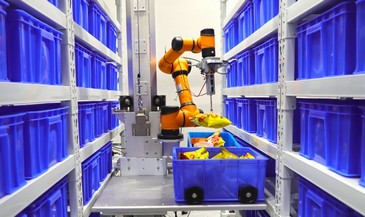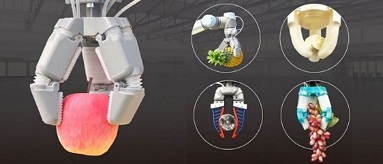| Dec 2022 Issue 20 | ||||||
 |
||||||
|
|
| CUE | |
| Heralding the new age of robotics and artificial intelligence in logistics | |
|
|
|
|
As the international trade and ecommerce markets continue to boom, the world has been seeing a sharp rise in the demand for logistics – picking up where pre-pandemic trends left off. For context, the global market was worth almost US$8.6 trillion in 2020 while in Hong Kong, the industry was ranked top among the city’s four main economic pillars – contributing to 2.9% of its GDP in 2019¹.
  However, due to a shortage of workers, soaring manpower costs, and ever-growing shipment volumes, the logistics industry is facing unprecedented challenges in keeping up with soaring market demand. Although issues such as warehouse management inefficiencies, operational safety, and rising operation costs were already major pain points holding logistics businesses back, the situation has been further aggravated by the pandemic, sending a clear signal that relying solely on human labour will inevitably lead to more instability and uncertainty in the future. Fortunately, robotics and artificial intelligence (AI) have been transforming logistics in ways we never could have imagined several years ago, mainly by (i) fulfilling deliveries; and (ii) conducting manipulation tasks in warehouses such as load/unloading, sorting, and packaging. As robots are not only able to outperform human workers, but also significantly reduce costs and risks of injury, more and more companies have been investing heavily in them. According to Price Waterhouse Cooper, AI could potentially contribute up to US$15.7 trillion to the global economy by 2030 – in turn, propelling the global logistics robots market to reach US$17.82 billion by 2028. As a result, the logistics robotics industry is growing rapidly worldwide, greatly enhancing operational efficiency and safety along the way.
In Hong Kong, this growth is manifesting itself in many forms. For example, the autonomous forklift built by the Hong Kong Centre of Logistics Robotics’ (HKCLR) spin-off company, the VisionNav Robotics, has been programmed to run unmanned storage facilities with over 9.4 metre-high racks , making it easier for businesses across various industries to upgrade their indoor/outdoor automated logistics capabilities. HKCLR is also focusing on developing robust sensing and grasping technology for a wide range of e-commerce objects, including reflective and transparent ones, through its ongoing “Smart Manipulation Robot” project. The breakthrough technology is already showing great potential for application in the automation of industrial material loading, supermarket order picking, and palletising. Although logistics robotics is still being deemed a blue ocean market with plenty of growth opportunities, reliability, cost, and efficiency remain top concerns for those who are considering adopting robots in real scenarios. As such, end-products should be sufficiently robust and adaptive to meet the ever-changing demands of the real world. Technology transfer is a continuous process – not a one-time effort. To commercialise their research outputs on a mass scale, teams must work closely with industrial partners beyond the R&D stage to identify the latter’s needs and conduct on-site testing/trial uses, so that continuous adjustments and iterations can be made to enhance the products. Hong Kong’s unique advantages in R&D are rooted in its sound intellectual property protection system, robust management ecosystem, and rich international talent pool, making the city a perfect incubator for product inventions. The Greater Bay Area also provides research teams with a broad market for better understanding specific supply chains. We have every reason to believe in a bright future for the development of logistic robotics in Hong Kong, the Greater Bay Area, and the world.
 The Faculty of Engineering is dedicated to bringing high-impact research to life by developing technologies with significant breakthroughs. Under the Hong Kong Government’s InnoHK initiative, the Chinese University of Hong Kong (CUHK) has established six InnoHK Centres for applying its world-class research discoveries to generate translational impact on a local, national, and global scale. Three centres were launched by the Faculty of Engineering under AIR@InnoHK, forming one of the only two research clusters focusing on AI and robotics technologies in the entire InnoHK. InnoHK sets out to develop Hong Kong as the hub for global research collaboration. A major initiative by the Hong Kong Government, it involves the establishment of world-class research clusters at the Hong Kong Science Park comprising research laboratories set up by world-renowned universities and research institutes to conduct collaborative researches. The three InnoHK Centres launched by the Faculty of Engineering are the Centre for Perceptual and Interactive Intelligence, Hong Kong Centre for Logistics Robotics and Multi-Scale Medical Robotics Centre.
 (Front left) Professor Helen Meng from the Department of Systems Engineering and Engineering Management was heavily involved in the establishment of the CUHK-led InnoCentre on AI.
|
|
 |
|
|
|
|||||||||||||||||||||||





